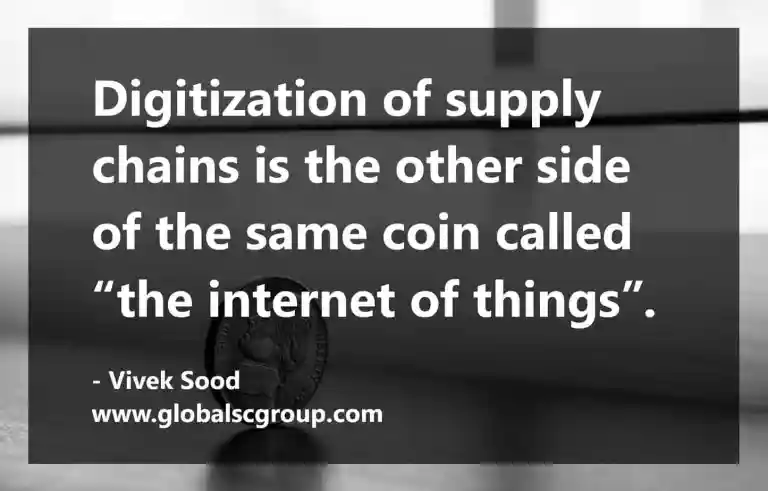Collaboration Is The NEW Advantage in Supply Chain
For decades, if not centuries, economists have been extolling virtues of competition. No doubt, competition unleashes forces lying dormant within human psyche – forces of of one-upmanship, jealousy, keep up with jones, and similar nature.
Of course, economists rarely look into the psyche behind actions and, even if they do – they would use different language to describe these forces.
And they accurately describe positive effects of such forces in fostering new products, new services, and better products/services at lower prices.
Yet, they naively ignore downside.
That Is Why Economists Rarely Make Good Leaders.
In 1980s, at peak of competitive drive in epicentre of competition, Michael Porter of Harvard wrote an entire book dedicated to competitive advantage.
In hindsight, this immensely successful book, perhaps also epitomised high point of competitive revolution.
Those of us who had doubts about this single minded focus on competition kept mostly quiet – after all Harvard was supposed to research these things extensively, and know better.
Not too long after that, Jefferey Skilling, another Harvard guy took this competitive drive to its extreme conclusion before firm he was leading – Enron – exploded in a volley of absurdities that extreme of anything can lead to.
Perhaps, That Was Also Turning Point In Corporate Thinking.
Collaboration became slightly more acceptable. Competition was good but Collaboration Is The NEW Advantage – but there too was time and place for collaboration. Perhaps your suppliers and customers had a role to play in your success.
Perhaps your Collaborative Network or B2B Network is important to your profits. Perhaps CEOs should pay more attention to their supply chains as they morph into collaborative B2B Networks.
It is true that some of most admired corporations in world today are led by CEOs who have intuitive mastery of supply chains.
The likes of Apple, Amazon and now Tesla are global corporations with a truly global business network and supply chain.
On An Objective Scale Measuring Quality Of Their B2B Network These Are Some Of Most Successful Companies On Earth Today.
For example – if you read Steve Jobs biography by Walter Isaacson, you will see this quote:
The phrases he used were “deep collaboration” and “concurrent engineering.” Instead of a development process in which a product would be passed sequentially from engineering to design to manufacturing to marketing and distribution, these various departments collaborated simultaneously. ” Our method was to develop integrated products, and that meant our process had to be integrated and collaborative,” Jobs said.
Yet, An Average Company Is Still Far Behind Its Leading Counterparts When It Comes To Globalization Of Their B2B Networks.
Let us look at two hard truths about average company before we talk about this conundrum. Most companies, start out as local or regional winners who expand out from their home turf to sell into national and global markets. Nothing unusual there. However, it is their attitude about globalization that is troubling. We will sell overseas, we might even make it there, but we will not make them partners of our supply chains.
How far can they go with this attitude?
If they really thought global, they would create global supply chains at start of process, not a country centric supply chain that has a global appendage attached to it.
Everyone Is More Comfortable On Their Home Turf, But Only Those Who Can Make All Turf Their Home Turf Can Truly Win High Stakes Game Of Globalization.
Second point, equally relevant, is key question why are CEOs so scared of supply chains?
Yes, it is complex and technical, but if worlds’ best CEOs such as Steve Jobs and Michael Dell want to make sure that they personally have a good handle on their companies’ supply chains, then why it is beneath the dignity of CEOs leading companies 100 times smaller? If they do not get used to it their competitors will beat you to pip.
Complexity comes from new technologies, and from seemingly infinite business possibilities opened up by these technologies.
Digitization Of Supply Chains Is Other Side Of Same Coin Called “Internet Of Things”.
Intelligent machines everywhere talking to each other all time, creating solutions that ease consumers’ lives is not going to be a dream for too long.
At same time, massive real-time data will be created and stored. This will need to be used intelligently and effectively to further enhance consumer lives.
Robots and automation will make 60% of current jobs redundant in 10 years. Digital 3D printing will finally make mass customization a reality.
We are not talking about a far-fetched future. All these technologies exist right now – what is lacking is a will to use them methodically.
Both of above points are hard facts that are not going to change, no matter how you try to wish them away. So, what is that solution?
Before Looking At Solution, Let Us Look At A Parallel, Or A Metaphor.
Steamship Titanic sank when it hit an iceberg going full steam ahead in fog. Since that day, fog navigation is every Ship Captain’s worst nightmare.
I still remember when I joined sea as a cadet, moment the ship hit a fog bank – Captain would take over navigation personally, station lookouts on Crows Nest,
Monkey Island and many other exotic sounding places on the ship and try and listen to foghorns of other ships – all this despite the presence of 2 wholly functional radars.
Some captains were trained in the art of navigation long time ago – when radars did not exist. Many of these ‘navigate by feel commanders’ never got comfortable with radars –
to their own peril and to the peril of their shipboard crew. As a result, shipping companies gradually eased these people out of command, making way for a newer generation of Masters who could make full use of available technology appropriately.
Capacity To Handle The Additional Complexity Is Now A Ticket For Entry.

Rethink your business models. Rethink your business processes. Massive waste, customer angst, and massive redundancy can be avoided if CEOs could think clearly and get past the complexity. Educate the government and academia to start making the changes to education system now. What is the point of churning out graduates totally unsuited to the future world when they enter the workforce.
A lot of complexity is created by self-interested parties to muddy up the waters. Sure they can stagnate the progress in one country, but that will only mean that companies from other countries will leapfrog the US companies.
Leading companies everywhere are outward looking and embed themselves into a global B2B network with a lot more ease than their average counterparts.
Most Asian companies are fast globalised their supply chains in search of collaborative advantage stemming out of B2B Networks – look at ArcelorMittal a steel corporation (with market cap of nearly $18 Billion and Total assets of nearly $100 Billion) originating out of a small operation in Indonesia.
Look at Zara (Inditex) a 87 Billion Euro market cap corporations starting out of rural Spain that is fast globalizing its supply chain.
A Massive Opportunity To Lead The Business World Into Its Next Renaissance Exists Right Now.
Technologies mentioned above are supplemented by societal and economic transformations around the globe.
This will lead beyond SCM 3.0 that we talk about a lot in the book UNCHAIN YOUR CORPORATION – into the realms of SCM 4.0.
I know it is just a concept at this stage – yet unmanned ships, aircrafts, cars will run the logistics of future. Unmanned forklifts will do the picks and packs in warehouses of the future.
Robots will man the assembly lines of future. And, print on demand 3D solutions will make half the inventory redundant.
Think About The Massive Changes This Will Entail In Business Models.
Now think about the end consumers around the world. New generations share more in common across the national boundaries than with the past generations in their own patch.
They are hyper-connected, super-informed and very vocal about their rights, needs and wants. They are also very disloyal to any particular brand. In fact the entire concept of branding is going through a revolutionary change.
3 Facts About Collaboration Is The NEW Advantage
To lead will require CEOs to adopt three critical viewpoints:
1. Create global supply chains,
3. Cut out the complexity by using technologies.
That will ensure that these corporations will thrive well past this century.
This has been a relatively thin and inexpensive book when compared to management tomes.
But it is still fairly long when you consider that the essence of all Greek philosophy was summed up in two words by Socrates – KNOW THYSELF – also inscribed in the forecourt of the Temple of Apollo at Delphi.
That is probably a good action point to use this material – particularly, if you are convinced that your company has none of the problems described in this book.
I invite you to take the complementary survey by sending me an email on [email protected] . You may be surprised by the result.
Having done that you may find that you want some of your people to delve deeper in this material.
For that purpose, we produce three exclusive strategic reports which might be a good starting point for them.
Of course the next danger will be when people start taking collaboration too far so be prepared to find a good balance between competition and collaboration.
Source: “UNCHAIN YOUR CORPORATION”
https://globalscgroup.com/ For more information check out our website

